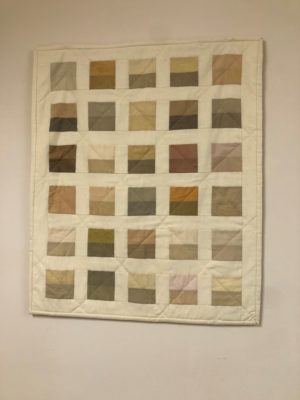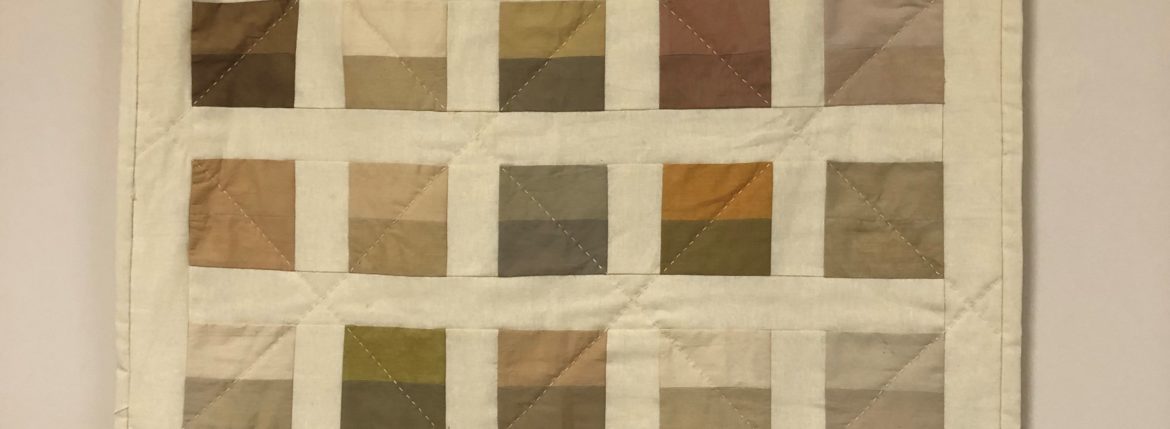
Weaver and natural dyer Kayla Powers came to visit Stetson’s Special Topics in Art: Environmental and Land Art class and performed a demonstration and talk, showing the process of using natural materials to dye fabric. Walking the class through the exact steps in the mixing and natural dyeing process, Powers talked not only about curating materials from the land, but also the beauty and importance of place-based art.
The dyeing process is a very specific one full of small details, but Powers made sure to emphasize the intuitive side of this artistic process as well as the scientific. The dyes, made of water, tannins, mordant, and natural materials, are very sensitive to variables like fabric type, material measurement, or even something so seemingly small as the pH of the water being used, but using intuition to experiment with these variables can produce beautiful results.
Fabric must first be made ready to be dyed, and after weighing it, the first step in the preparation process is scouring. The scouring technique is used to strip the textile of layers that might prohibit the dye from adhering fully. Depending on whether the fiber comes from an animal or a plant, meticulous measurements of different ingredients must be used and then simmered with the fabric. If the fiber is cellulose, tannins must be used next, in a similar process to scouring, to ensure that the color of the dye will be strong. Mordant, which will bind to the fiber to make the colors lighter and brighter, is used next in either alum or iron form.
Whether it is leaves, sticks, berries, flowers, or even pinecones, natural materials can have many beautiful and unexpected outcomes in their dye color. The longer the chosen component stays on the heat, the stronger the color will become, and it is at this point that the artist can take liberty to add as much or as little material and for what amount of time. After straining this liquid, the fiber can be added and soaked in the dye to change color. The exact colors of the materials are not often duplicated in the final dye. What started out one hue will likely not be the same, and is rarely very close to the original shade post-dyeing.
The final array of dye colors that come from the flora and fauna of any one specific area is what Powers calls the seasonal local palette. She likes that each geographical location will yield a different color scheme or range, and the season or even the time can spur completely different results. This is what she names place-based art; art that depends on the where and when of the selection of materials. The source of each material has a story and a history, and natural dyeing has been a tradition for thousands of years.
Powers currently has an exhibit in the Environmental Gallery in the Rinker Environmental Learning Center (RELC), where you can see a collection of her dyed fabric, quilts made of naturally-dyed fabric, and some materials and the colors they create. The show will be there until the 26th of February.
test2

